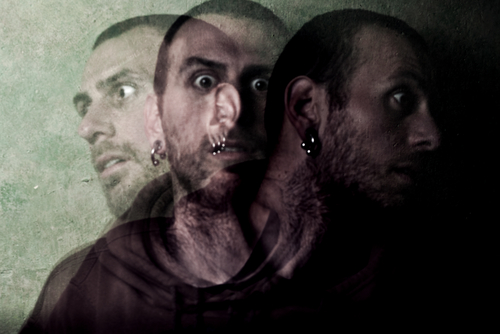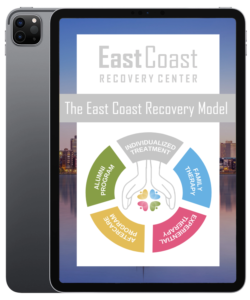Meth-induced psychosis is one of the lesser-known but more dangerous side effects of methamphetamine use. Meth affects the central nervous system, producing the euphoria and increase in energy that most users or unfamiliar people would expect. What they don’t expect or realize too late is the possibility of hallucinations, delusions, and paranoia caused by binging meth. And because the pleasurable effects of meth can make users crave it, and the crash is intense and uncomfortable, individuals can use and use it until the chances of experiencing psychosis increase.
This brief article discusses meth-induced psychosis, how often it occurs, how long it lasts, and how to spot and help someone experiencing psychosis.
What Is Meth-Induced Psychosis?
If you’ve used meth or have seen someone on meth twitching, scratching, or paranoid, chances are they’re experiencing methamphetamine-induced psychosis (MAP). Often indistinguishable from symptoms of schizophrenia, MAP causes users to see, hear, and feel things that aren’t there. Tactile hallucinations (physical sensations) are some of the most common symptoms of meth use and psychosis. Meth users usually describe the feeling of bugs crawling under their skin, also known as meth mites. Other symptoms include:
- Confused thoughts and difficulty speaking clearly.
- Feeling overly suspicious and fearful of others.
- Believing that others are plotting against or trying to harm them.
- Thinking that world events are directly connected to them.
- Seeing things like objects, people, or animals that aren’t actually present (visual hallucinations).
- Hearing sounds like voices or music that don’t exist (auditory hallucinations).
- Believing that their thoughts are being broadcasted and others can hear them.
- Engaging in strange or violent behaviors
These symptoms and related conditions can worsen social and work life and make it harder to seek treatment.
Read more: Meth Mites: The Imaginary Bugs of Meth Use

Meth-Induced Delusions
Not only can meth induce hallucinations, but another part of meth-induced psychosis is delusions. Delusions are fixed, rigid beliefs that a person believes are real but aren’t supported by fact. Meth delusions can vary greatly, but paranoid delusions are at the top of the list. Paranoid delusions occur when a person believes that some entity, person, or organization is trying to harm them somehow.
Another common meth delusion is a grandiose delusion, which causes a person to believe they’re famous or globally important. For instance, a person may believe they are royalty or hold some exquisite power over the world. Meanwhile, erotomaniac delusions can convince an individual that someone is in love with them when they are not. That person may be a stranger, a celebrity, or someone their mind has created.
For some users, delusions mix to form a complicated system filled with interconnected false beliefs that seem to construct an entirely new and scary reality.
Is Meth-Induced Psychosis Common?
Around 25% of regular methamphetamine users experience symptoms of psychosis within a year. Some individuals can be more prone to experiencing these symptoms due to identified “candidate genes” associated with a vulnerability to meth psychosis, suggesting a potential genetic link to schizophrenia, schizoaffective disorder, and schizotypal personality disorder.
Additional risk factors for meth-induced psychosis include binge use of meth, prolonged and high-dose use, using multiple substances alongside meth (polysubstance use), and having co-occurring psychiatric disorders, especially mood disorders and antisocial personality disorder. A history of sexual abuse, a family history of mental illness, and meth use at a young age can also contribute to meth-induced psychosis.

How Long Does It Last?
To be diagnosed with methamphetamine-induced psychosis, symptoms must occur within one month of intoxication or withdrawal. Transient psychosis, which comes and goes, can last for a few hours to up to a week after. On the other hand, persistent psychosis can linger for up to six months after quitting meth, especially if there’s a history of repeated meth abuse, potentially leading to long-term brain damage.
Unfortunately, what might initially be diagnosed as meth-induced psychosis can evolve over several years into a primary psychotic disorder, and symptoms can occur when the user is currently high, coming down from a high, experiencing cravings, and even when sober.
How To Spot Meth-Induced Psychosis
It can be heartbreaking to see someone we love or care about struggling with substance abuse. It may have gotten to the point where they need professional help because an individual can only go so far as to prevent drug abuse in someone else. But there are a few things you can do at the moment if you notice someone experiencing hallucinations, delusions, or twitches. (We do not recommend approaching strangers if you think they’ve used methamphetamine.)
- Look for behavioral signs: Watch out for specific behaviors that may indicate methamphetamine psychosis:
- Alertness, agitation, being jumpy, and overreacting to things.
- Rapid and non-stop talking, jumping from one topic to another, and having confused thoughts.
- Engaging in irrational and unpredictable actions, like talking to imaginary people or arguing and yelling for no apparent reason.
- Physical signs of methamphetamine use include dilated pupils, wide eyes, and excessive sweating.
- Ask them about drug use: To directly determine if the psychotic episode is related to drug or meth use, ask your friend or loved one, anyone around them, or bystanders if they’re in public, if they’ve taken any drugs, including ‘speed,’ ‘ice,’ ‘crystal meth,’ or ‘base.’ Ask them when they last slept and if they’ve had something to eat or drink in the last few hours.
- Rule out other causes: Keep in mind that psychosis and aggressive behavior can also be linked to other stimulant drugs, cannabis, alcohol, and mental health disorders like schizophrenia. Try to gather information to determine if the person might be affected by any of these problems.

What To Do
Methamphetamine users experiencing psychosis can become aggressive and might think that you intend to harm them. They often have a lot of energy, are highly alert, and behave unpredictably, making it challenging to talk or reason with them. To handle such situations safely, it’s crucial to avoid confrontation:
- Keep a little distance from them, but still express you’re there to help them.
- Speak calmly and softly. Remember that they’re probably scared or unaware they’re experiencing psychosis.
- Try not to argue or disagree with them. You’re there to provide support and hopefully help them.
- Be supportive and reassuring. If they’re a close friend or family member, chances are you just want to see them get the help they need.
If you encounter someone with meth-induced psychosis in a public place and they pose a danger to themselves or others, contact emergency services. Don’t take any extreme actions into your own hands.
Long-Term Meth Addiction Support
Someone experiencing meth-induced psychosis can require hospital or inpatient stabilization. But once they leave emergency care, they’ll need long-term meth addiction and mental health to address underlying issues that led to psychosis. They’ll first want to start with a medical detox program. Meth withdrawal symptoms can be uncomfortable, and a professional detox program can help individuals purge meth from their system and prepare them for the next stages of recovery.
Once they’ve detoxed, an inpatient or outpatient addiction program can help them through the mental hurdles and meth cravings. Methamphetamine abuse can trick the brain into believing it needs it for dopamine and pleasure, and the first weeks of treatment will focus on healthy coping skills and underlying mental health disorders that could have contributed to or resulted from a substance use disorder. Remember, methamphetamine dependence isn’t permanent.
Read more: Meth Rehab in Boston—Why It Is Important to Seek Help

Contact East Coast Recovery
If you or someone you know is struggling with meth addiction or has experienced meth-induced psychosis, contact East Coast Recovery in Boston, Massachusetts. If someone you know has been using meth and hasn’t experienced psychosis, don’t take any chances or unnecessary risks. The negative and long-term effects of methamphetamine abuse aren’t worth the high. East Coast Recovery is dedicated to helping individuals overcome substance use disorders through evidence-based and holistic therapy methods run by compassionate and empathetic professionals. Don’t wait. Call today, and one of our admissions agents can help you get started.











